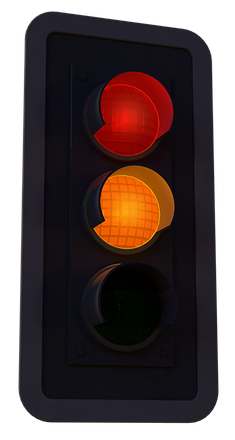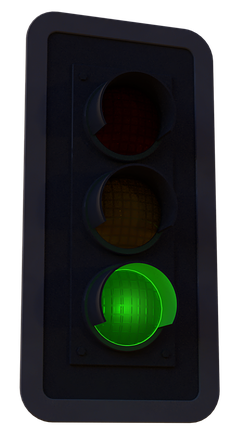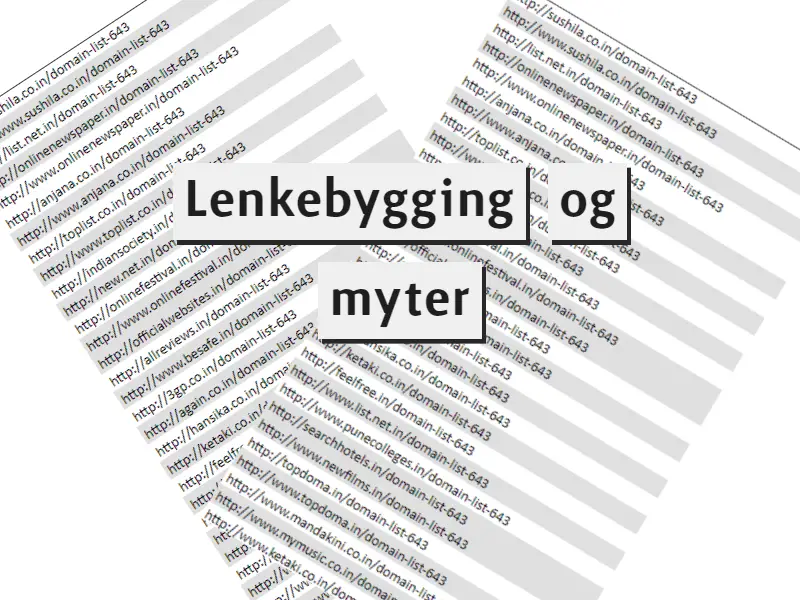One of the areas you miss the most when you create websites yourself is content. That is why we have written a guide about good content on websites, and why this is important.
It takes about 10 minutes to read the entire article. There are 3 traffic lights during the article which illustrate the minimum, just enough, and long enough article. There are also some bonus tips, right at the end.
Use of headings.
Correct use of headings is important. Think like a “book” – Title, chapter, paragraphs. When you use an editor, you probably have the following choices. The heading that we have used just above here is H2.
- H1
- H2
- H3
- H4
- H5
- H6
All of these are headings and should be used as a hierarchy, and not in random order.
It is recommended that the most important and top heading is H1, and that it is preferably used once.
Google says in its guides that H1 can be used several times – then it is usually in connection with clear sections. If one page covers several topics, for example.
Use of subtitle
The heading in this paragraph is an H3. And should be used in grouped topics that fall naturally under the H2 heading above. You are welcome to have several paragraphs with H3 headings below here if you wish. But a new H2 will then create a new section. As we do below.
Use of images on your website
It is always an advantage to have a relevant image for the content. The image should be named in a descriptive way. Imagine Google analyzing your image and getting the following option:
- 10395395b-20190210.jpg
- skydiving-over-oslo-summer.jpg
The file name of the image will say something about what can be expected to be seen in the image.
In editors, you also often have the opportunity to add “all” texts, which are texts that are often read aloud to visually impaired and blind people. But it also gives Google more information about the image.
Don’t start with “Image of…” go straight to the core
Keep the length of the alt text under 125 characters
Feel free to use keywords, IF it is relevant, do not exaggerate.
Pay attention to image size. It is a larger topic that we will not go into here. But if you know how, scale images and optimize for low file size. Unnecessary load time is not good.
Tip! It is always a good idea to use original and unique images.
Write legibly for the web
There is a difference between reading on a mobile phone, on a laptop or PC screen, versus in a book. It is therefore a good idea to know some of the tips here as well.
Use short paragraphs. The concentration of us readers is limited.
Break up text with headings, images, bullet points, or use bold text to illustrate something, where appropriate.
3-4 lines are plenty, go over this, only in exceptional cases.
How long should you use texts online?
This is a very interesting topic for us search engine geeks. Here there are a number of factors to take into account. We need to know how Google thinks.
Google is concerned with quality. This means that the reader, i.e. you, should get value from being on this website. If we could give you this in 600 words – then that’s good, but then there’s a bit of a competition then.
If you google “fly fishing”, the first result has just over 1,000 words. On page 5 we find someone who wants to profile himself as a destination for fly fishing, where there are about 400 words in the text.
The user’s intention is important. If it is the case that someone wants to learn about fly fishing, then you are welcome to go into detail, go for 2000 – 2200 words. Well divided into sections.
We see that Google rewards articles that go in depth and are also unique.
But all YOU need is to write something better than number 1. Which gives the reader greater benefit.
Use the right words
There is a difference between a clipper and a beard trimmer. There is a difference between “Jacket” and “leather jacket for men” – Here it can be difficult to know which are the right words. But a tip is to get someone to look for your goods and services. Or try to take it easy yourself, but in other words.
It is the words used when people search in Google that are important. These are words that you want to appear again in the heading, in the name of the picture, in the general description of the picture, preferably used in a sub-heading. And that must be repeated in the text as well.
Use synonyms and use related words too. If you write about a dog breed, you can include something about chicken feed, puppies, animal health, vets, etc.
Search volume is something we who work with search engine optimization check. To see which words are searched for most frequently.

Structure and links
A link is made up of several parts, and the link also says something about the content. Look at the example below:
https://domene.no/innhold-1/2020/12/14?func=list-service
https://domene.no/tjenester/bil/rengjoring
https://domene.no/tjenester/bilpleie/voks/
or
https://domene.no/ansatte/
https://domene.no/arkitekter/
The link should say something about what we can expect. It’s good for the reader, and it’s good for Google. It’s good for your website’s visibility.
Meaningless categories are unnecessary. All links in a link should have content, a link is divided by “/”
Let’s use an example with services. domaine.no/tjenester/bilvask. If you don’t have anything on the domaine.no/tjenester page that makes sense and brings added value to the customer, it can be cut out. domaine.no/bilvask is more efficient.
Avoid too many levels. All content on your website should be found in 3 or fewer clicks.
If you have to navigate down to “services/county/Inlandet/Hamar/local services/wash/car wash”, then you have missed the mark.
Tip: Make sure that domain.no/[hjemmesiden] does not compete with domaine.no/produkt[produkt/tjeneste-siden] – We often come across pages where you like to offer one or a few services, that you create two pages that have relatively similar content. Like content is not good. We call that cannibalization.
Internal and external links
Google has control over how many links point to the different pages on your website. These are some of the several hundred parameters that help Google determine the order of the search results.
Internal links are links that point from one page to another page on your website. For example, if you wrote about car cleaning, you could link to booking a wash.
Here it is important not to exaggerate. Keep the content thematic. Normally, you want to have some strong points that are your “cornerstone”, you want to link back to them as much as possible. Not just randomly from page to page. It is enough to link to the same page once in the content, but use it naturally.
You won’t be penalized for having multiple similar links, but you won’t earn anything from it either. Correct use here says something about which sides you think are the strongest.
Outbound links are links from your website to another website. It is not always natural. But suitable as documentation, references, or to be able to offer more reading for those who want it. Here you have to consider whether there is value in sending the reader to other websites, or whether you want to keep him on your website.
Articles where the goal is education benefit greatly from outbound links. Just be sure to update them if they are changed, deleted or moved in the future.
External inbound links are good if a technical weekly should write about your company, and leave a link, which points back to your page, then it is a small “quality stamp” – Here it is not easy to control what you get, or what is coming. But quality content tends to get shared, and linked to. If you run an online store, it can for example be from product reviews.
WARNING! – Do not under any circumstances buy links. It has a short-term effect, but is considered “cheating” by Google. There are many who lure with safe methods or private networks. NO! If you buy links, in the worst case you can be blacklisted, invisible, and have to build something new, with a completely new domain. You may go happily for years, and suddenly you lose all traffic. High risk.
Link building – is a recognized method of creating more traffic to your website. It is something completely different than buying links. First, link building is an ineffective method in the Norwegian market. It is probably the last thing you need to spend time on. There is more value in creating texts for publication in magazines, online newspapers etc
When it comes to links, we quickly get into a complex area, which is about the website’s authority. It is better for you to get a link from a well-known online newspaper than from an unknown blog or website.
Be unique with your content
Lyrics online must be more unique than Elton John and early David Bowie.
- Do not copy other people’s texts.
- Avoid other people’s texts, but only in the translated version.
- Use a quote and source if you paste parts of texts from others.
- Do not use the supplier’s product texts.
Google is a search engine, it is good at finding, and it will find the texts you have copied from, regardless of whether you found it on page 10, in incognito mode with VPN, while searching pages in Cyrillic. If you want to be the best, you have to be unique and better than the others.
The same applies to pictures. Unique photos are best, using photo services is better than no photos. But if you can take your own photos, your own product photos, that’s the very best. This does not mean that you should replace 10,000 images in your product catalog. Cost/benefit must be assessed here.
Imagine if someone could know which 50 products you should focus more on? We can find that out for you.
But if you’re going to teach someone about fly fishing, it’s a good idea to use good photos from your own experiences.

Our lesson today
About now, you have read through 1600 words. Almost every day when we analyze websites, we come across texts that are too thin or unstructured.
The aim here is to write a little about what is important, why it is important, and also show a little through example.
See how we have set up the headings. This text is not written to be found in Google, but to benefit you. A text written “for Google” contains more clear use of keywords, without it being exaggerated – the language should always be natural.
We include a bonus episode as well.
Who is the reader?
Think about who you are writing for. Is anyone going to buy your product? Is the reader a novice or an expert? Have you managed to provide a useful value that takes the reader on?
The target group for this article is those of you who choose to create websites yourself. Who have no experience with search engine optimization, or text for web use.
- Who is the reader?
- What is the purpose?
- How will the page be found?
Let’s say you want to run a digital marketing campaign. Then you don’t need to land the buyer on a page with 2,000 words. That page should be optimized, short, to the point, and provide just enough information for the buyer to move on.
Are there pages to be captured by Google’s search engine? Then you have to be more conscious of using the right words, hit on the applicant’s intention and give a little more.
Google has acquired a slightly more “academic” predilection, so that long content written for professionals gets an automatic “bonus” – “professionals” in this context can be you.
For our part, this is a page, which we will probably send to you via a link. Here you can understand a little more of what we work with and analyze daily – but enough that there are things you can do yourself.
If you follow what we write here, your website will become more visible. But it doesn’t help much if you jump from #68 to #32 and don’t progress. Then you must contact us.
Update old content
You must not write something new all the time. It is also wise to maintain old content. Rewrite, update and add more. Avoid too much similar content. It is better to update an old article/page with new content, than to create something new similar to it.
Now this is about 2,000 words in total. It is a very good length. Hopefully with a lot of useful for you. Anything particularly longer, then the length will start to count against. In that case, the utility value must be extremely high and keep the reader engaged. If you need more space than 2000-2200 words, then consider dividing into several articles.
The length, in isolation, is not the most important thing, but that you write enough, and better than the competition.

And remember, to share what you write in social media .







